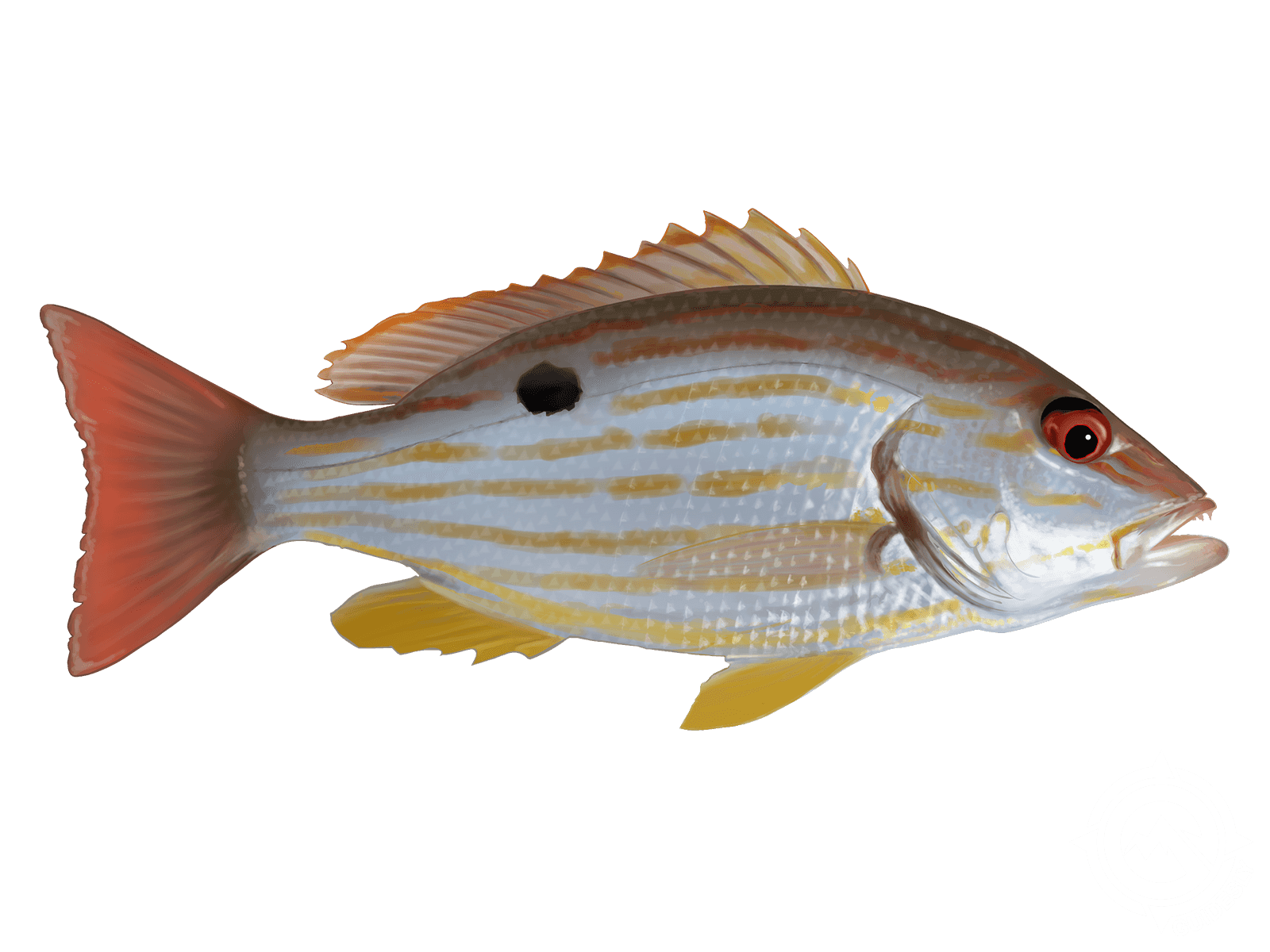Lane Snapper

Species Details
Lutjanus Synagris
Lutjanidae
Perciformes
Coral Reefs, Sand, Inshore, Nearshore
3 - 8 lbs.
10" - 24"
Lane Snappers (Lutjanus Synagris) Fish Description
The Lane Snapper is an almond-shaped coral fish that is generally pink-red or silvery-pink with yellow-tipped red fins. Their silver-bottomed bodies have pink and yellow lines extending from end to end like “lanes” or a candy cane. They typically grow to around 14 inches in length, but they’ve occasionally been captured at 20 inches. They have rounded snouts and anal fins, short pectoral fins and a double dorsal fin that ispositioned in the center of the lateral line. Their caudal fin is branched is slightly forked and may be blackish on the outer edges.
Although the Lane Snapper can be found in numerous habitats, they prefer coral reefs and sandy areas that are abundant in vegetation in saltwater. This fish is a carnivore that generally feeds on the ocean floor, with a diet consisting of crabs, mollusks, shrimp and smaller fish.
Interesting Facts about the Lane Snapper
- The Lane Snapper is known to cross breed with other fish of a similar species
- Hybridization between Yellowtail Snapper and the Lane Snapper is documented widely and these hybrid species have been caught repeatedly
- The crossbreeding between these two species of fish suggests that they may be genetically similar than previously thought.
- Anglers may often refer to the Lane Snapper as a “dessert fish” because it can often find its way into a catch as a bonus when fishing for red snappers and squid
Size
The Lane Snapper is generally found to be between 10 inches and 24 inches long, averaging at about 20 inches in length. They generally weigh in at a minimum of 3lbs and an average of around 7lbs, with the world record catch for the Lane Snapper at a massive 8lb 3oz.
Fishing Habitat & Distribution
Adult lane snappers live in a diverse number of environments, but have been frequently observed in shallow inshore waters over coral reefs and sandy bottoms with heavy vegetation. This fish generally lives in the same area for its entire lifespan. This species has been recorded at depths of 1300 feet in offshore waters but most commonly thrive between 69 and 230 ft. In relatively shallow waters, larger species may be collected, but are usually less abundant.
The Lane Snapper can be located in the western Atlantic Ocean, from North Carolina in the United States to the southern tips of Brazil. Higher population counts can be found in the Antilles off the Panama Coast, and the northern coast of South America. They have been known to swim in the waters of the Bermuda and the Gulf of Mexico as well.
The spawning season of the Lane Snapper is March through September, and generally reaches its sexual peak at 6 inches. The eggs flat freely in water currents, and hatching occurs within 23 hours.
The Mahogany Snapper and Mutton Snapper are related species that occur in the same regions as the lane snapper. The Mahogany Snapper has a larger eye, and the Mutton Snapper has 2 oblique blue streaks.
Fishing Technique
The Lane Snapper is an aggressive small fish, and as such, are normally caught on hook and line. Catching them in the water is easier compared to other game fish, as they are not as wary about hooks and lines, but expect a battle once they are hooked.
A variety of live and frozen baits, such as shrimp, squid, cut bait, and minnows, can easily entice the Lane Snapper to engage when fishing. However, success with synthetic lures and baits have also been reported. Lane snappers are usually not directly pursued by anglers, but often are captured when searching for grouper or other snapper species, as well as other shallow to mid-depth bottom fish.
Lane Snappers are easier found in shallower waters in comparison to other fish of the same species, and usually feed the most at night. Their main diet includes snails, shrimp, swimming crabs, mantis shrimp, rock shrimp and cutlassfish are their main food.
They are mainly located around coral reefs with heavily vegetated sandy areas, in both murky and pristine waters. Anglers fishing for them should be able to find Lane Snappers in large numbers during the breeding season, which is from March to September.







